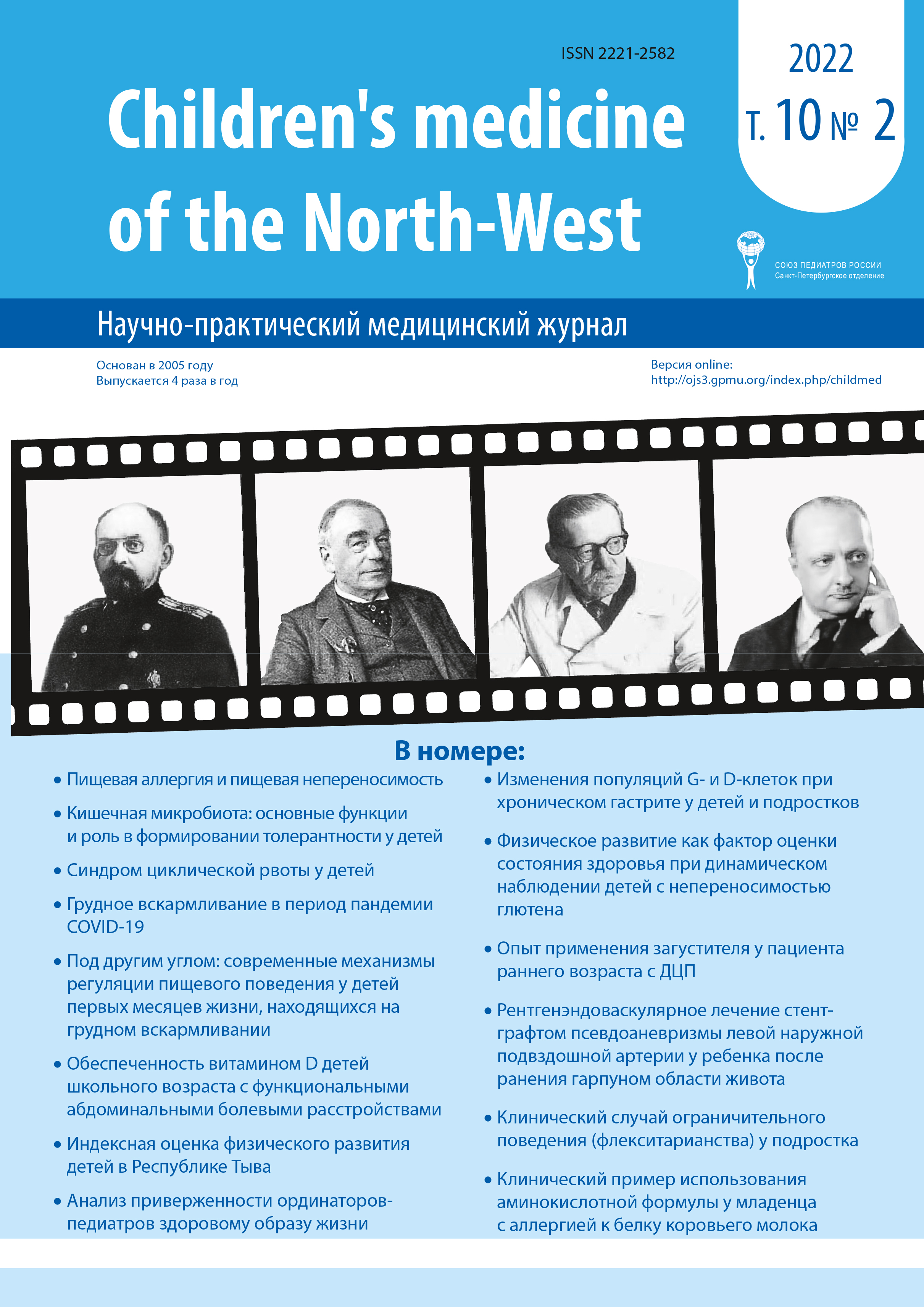Changes in g and d -cell populations in chronic gastritis in children and adolescents
Abstract
Introduction. Studies devoted to the analysis of changes in G- and D-cell pools in chronic gastritis in children and adolescents are few, and their results are contradictory. The aim of the work is to establish the nature of changes in the populations of G- and D-cells in chronic gastritis in children and adolescents. Material and methods. An Immunohistochemical study of gastrobiopsy materials was performed in 62 patients aged 7-17 years with chronic Hp -associated gastritis. The number of G- and D-cells was determined based on 1000 epithelial cells of the glands of the gastric mucosa). Results. A sharp hyperplasia of the G-cell population in the antrum was revealed already at the initial inflammation of its mucous membrane. As the degree of the latter increases, a further increase in their number is noted, which reaches a maximum with a pronounced process. Similar dynamics were recorded for D-cells in both fundal and pyloric glands. The appearance of morphological signs of atrophy of the gastric mucosa is not accompanied by a significant change in the number of these endocrinocytes. Conclusion. In chronic Hp -associated gastritis in children and adolescents, there is an increase in the number of G- and D-cells in the pyloric and fundal glands, which increases as the severity of the inflammatory process in the gastric mucosa increases.



